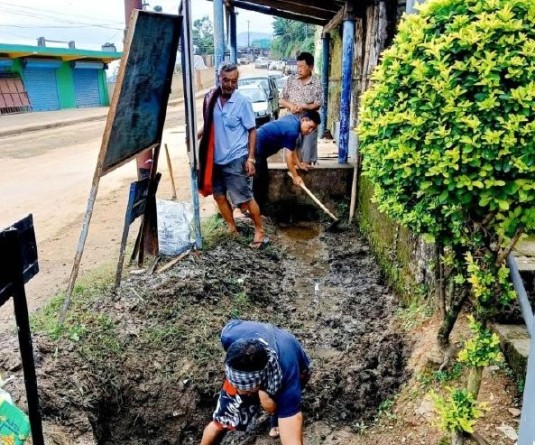
D Rajiv Shankar IFS
ACF, Wokha Forest Division
Nagaland is predominantly a hilly state which receives abundant rainfall. But most of the rainfall is concentrated in 5-6 months. People meet their water requirements primarily on spring and surface water resources due to the hilly nature of the terrain. Seasonal variations in rainfall, limited groundwater recharge, deforestation, soil erosion, population growth, and unsustainable farming practices are main reasons for water scarcity which is ubiquitous in the state. The problem is supposed to be magnified manifolds by climate change.
Water scarcity puts significant burden on communities, and more so on women and children to meet the daily needs like drinking, cooking and sanitation. Water scarcity forces people to use unclean water sources, increasing the risk of waterborne diseases such as Diarrhoea, Typhoid and Cholera. Lack of access to clean water is an important cause of malnutrition.
This underscores the importance of rainwater harvesting for solving the water woes of Nagaland. A recent study on assessment of rooftop rainwater harvesting potential showed that 65% of total water demand of Nagaland can be met by deploying rooftop rainwater harvesting structures. Rainwater harvesting structures for water security can be categorized into short term and long-term measures. The short-term measures include installation of roof water harvesting, and integration of these structures with rain pits, staggered and contour trenches. The long-term measures include protection and conservation of springsheds, and watersheds primarily through natural groundwater recharge, agronomic and vegetative measures. These can be supplemented by engineering measures like check dams, gully plugs etc., based on necessity. Rainwater harvesting has been in use in India since ancient times. Notably, North-Eastern India is known for traditional water harvesting structures like Zabo system of Nagaland, Bamboo trickle water system of Meghalaya and Apatani water system of Arunachal Pradesh. The benefits of rainwater harvesting range from providing water security, minimising impact of flooding, recharging ground aquifers to preservation of natural habitats.
Rainwater harvesting is not a panacea. Any solution to the water woes will only be successful through mass participation of people and awakening of ‘water consciousness’. This would entail altitudinal and behavioural changes in the way we think, conserve and use water. For instance, use of Water Budgeting helps communities to understand water demand & supply, and plan for equitable and just distribution of water among the community members. 15 actions were outlined for conserving water as part of Mission LIFE. Some of the suggested actions include implementing rainwater harvesting, cultivation of less water intensive crops, use of water saving technologies, investing in a water meter for measuring household water consumption etc.
As we observe World Environment Day 2024, themed "Land Restoration, Desertification, and Drought Resilience," the importance of rainwater harvesting in Nagaland becomes even more pronounced. Rainwater harvesting not only addresses immediate water scarcity but also contributes to land restoration by enhancing groundwater recharge and preventing soil erosion. By integrating traditional and modern water harvesting techniques, Nagaland can build resilience against aridity and support sustainable land use, aligning with the global call to combat desertification and restore our natural ecosystems. This collective effort will ensure a water-secure future for the state, preserving its environment for generations to come. Let us solemnly resolve to translate this vision into a reality.




